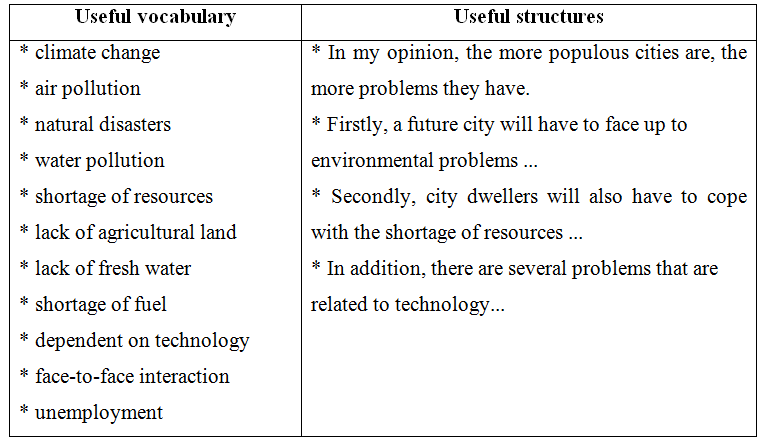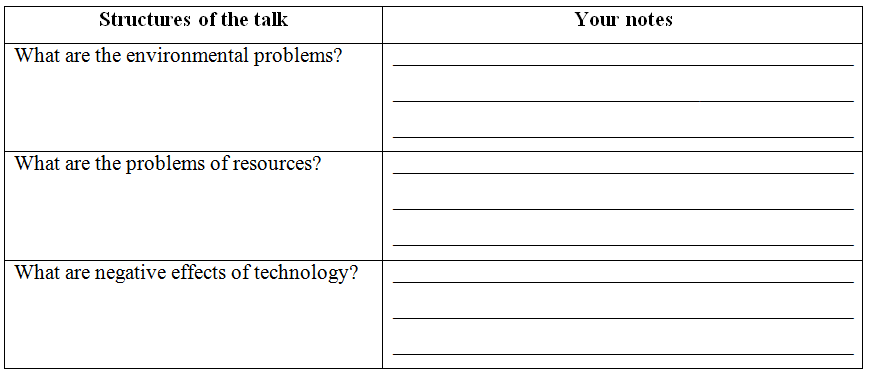Trắc nghiệm Chuyên đề 11 Unit 9. Cities of the future !!
Câu hỏi 1 :
Choose the best option to complete each of the following sentences.
1. Many types of__________energy such as wind and solar energy will never run out
1. Many types of__________energy such as wind and solar energy will never run out
Câu hỏi 2 :
2. Advances in technology are believed to improve the__________of life.
2. Advances in technology are believed to improve the__________of life.
Câu hỏi 3 :
3. This apartment is far from perfect, but it’s__________.
3. This apartment is far from perfect, but it’s__________.
Câu hỏi 4 :
4. In the future, cars equipped with on-board computers will be able to__________and avoid traffic jams automatically.
4. In the future, cars equipped with on-board computers will be able to__________and avoid traffic jams automatically.
Câu hỏi 5 :
5. Despite all the difficulties, Luke remains__________.
Câu hỏi 6 :
6. Environmentalists would like to see fossil fuels replaced by__________energy sources.
Câu hỏi 7 :
7. If you want to raise rents, you have to__________the housing first.
7. If you want to raise rents, you have to__________the housing first.
Câu hỏi 8 :
8. The hospital is so__________that some patients are being treated on trolleys in the corridors.
8. The hospital is so__________that some patients are being treated on trolleys in the corridors.
Câu hỏi 9 :
9. __________dwellers often accept noise as part of urban life.
9. __________dwellers often accept noise as part of urban life.
Câu hỏi 10 :
10. Michael remained strongly__________that his life could be much better if he moved to the city.
10. Michael remained strongly__________that his life could be much better if he moved to the city.
Câu hỏi 11 :
11. Osaka is considered one of the most__________cities thanks to its comprehensive infrastructure, low crime rates and stable public transport.
11. Osaka is considered one of the most__________cities thanks to its comprehensive infrastructure, low crime rates and stable public transport.
Câu hỏi 12 :
12. The alarm will go off automatically as soon as smoke is__________.
12. The alarm will go off automatically as soon as smoke is__________.
Câu hỏi 13 :
13. A large international meeting was held with the aim of promoting__________development in all countries.
13. A large international meeting was held with the aim of promoting__________development in all countries.
Câu hỏi 14 :
14. It’s important to__________the infrastructure of the city to make it more liveable.
14. It’s important to__________the infrastructure of the city to make it more liveable.
Câu hỏi 15 :
15. Many Americans were leaving their farm for the promise of
Câu hỏi 20 :
5. What we need is a more__________transport system, in other words, more buses and trains, and fewer cars.
5. What we need is a more__________transport system, in other words, more buses and trains, and fewer cars.
Câu hỏi 23 :
3. A: This movie is so interesting.
B: You like the film we are watching, don’t you? ________
3. A: This movie is so interesting.
B: You like the film we are watching, don’t you? ________Câu hỏi 24 :
4. A: Do you know John Thompson?
B: He is the richest man in our town, isn’t he? ________
4. A: Do you know John Thompson?
B: He is the richest man in our town, isn’t he? ________Câu hỏi 27 :
7. A: I love America. I wish I could travel to America one day.
B: You’ve never been abroad, have you? ________
7. A: I love America. I wish I could travel to America one day.
B: You’ve never been abroad, have you? ________Câu hỏi 29 :
9. A: We should eat more fruit every day.
B: Fruit is good for health, isn’t it? ________
9. A: We should eat more fruit every day.
B: Fruit is good for health, isn’t it? ________Câu hỏi 33 :
13. A: I can’t stand this cold weather.
B: Yes, the weather today is terrible, isn’t it? ________
13. A: I can’t stand this cold weather.
B: Yes, the weather today is terrible, isn’t it? ________Câu hỏi 34 :
14. A: I have no idea what to do tomorrow.
B: We can go to the cinema if you want, can’t we? ________
14. A: I have no idea what to do tomorrow.
B: We can go to the cinema if you want, can’t we? ________Câu hỏi 35 :
15. The cost of living in the countryside isn’t as high as in the city, is it? ________
Câu hỏi 41 :
Choose the best option to complete each of the following sentences.
1. There are some Japanese in your class, ___________?
1. There are some Japanese in your class, ___________?
Câu hỏi 42 :
2. Let’s go out for a walk in the late afternoon, ___________?
2. Let’s go out for a walk in the late afternoon, ___________?
Câu hỏi 43 :
3. Everyone has been told about the news, ___________?
3. Everyone has been told about the news, ___________?
Câu hỏi 44 :
4. Don’t let anyone know our secret, ___________?
Câu hỏi 45 :
5. You couldn’t understand the directions on the packet, ___________?
5. You couldn’t understand the directions on the packet, ___________?
Câu hỏi 46 :
6. You haven’t seen Rosie since you graduated from university, ___________?
6. You haven’t seen Rosie since you graduated from university, ___________?
D. have you
Câu hỏi 47 :
7. Don’t talk during the lesson, ___________?
7. Don’t talk during the lesson, ___________?
Câu hỏi 48 :
8. They did little to improve their situation, ___________?
8. They did little to improve their situation, ___________?
Câu hỏi 66 :
6. If my brother forgets to take a packed lunch, he usually___________a sandwich from the canteen.
6. If my brother forgets to take a packed lunch, he usually___________a sandwich from the canteen.
Câu hỏi 82 :
4. You don’t put ice cream in the freezer. It melts.
→ ____________________________________________________
4. You don’t put ice cream in the freezer. It melts.
→ ____________________________________________________Câu hỏi 84 :
6. You watch this horror film. You won’t be able to sleep.
→ ____________________________________________________
6. You watch this horror film. You won’t be able to sleep.
→ ____________________________________________________Câu hỏi 86 :
8. You mix hydrogen and oxygen. You get water.
→ ____________________________________________________
8. You mix hydrogen and oxygen. You get water.
→ ____________________________________________________Câu hỏi 87 :
9. Jane buys a new house. She will hold a housewarming party.
→ ____________________________________________________
9. Jane buys a new house. She will hold a housewarming party.
→ ____________________________________________________Câu hỏi 88 :
10. You press this button. The doorbell rings
→ ____________________________________________________
10. You press this button. The doorbell rings
→ ____________________________________________________Câu hỏi 90 :
2. What leads to the development of the smart city?
→ ____________________________________________________
2. What leads to the development of the smart city?
→ ____________________________________________________Câu hỏi 91 :
3. What can streetlights with sensors do?
→ ____________________________________________________
3. What can streetlights with sensors do?
→ ____________________________________________________Câu hỏi 92 :
4. How can a smart city help solve the environmental problem?
→ ____________________________________________________
4. How can a smart city help solve the environmental problem?
→ ____________________________________________________Câu hỏi 98 :
5. One of the smart innovations architects and end-users can make is building affordable housing in the city centers
Câu hỏi 100 :
2. Most of the growth in population will happen in the urban areas of the world’s___________countries.
2. Most of the growth in population will happen in the urban areas of the world’s___________countries.
Câu hỏi 101 :
3. The world will have to provide sufficient food, sanitation and___________for all people.
3. The world will have to provide sufficient food, sanitation and___________for all people.
Câu hỏi 106 :
2. I/ think/ life quality/ city/ improve a lot/ next 30 years.
→ ________________________________________________________
2. I/ think/ life quality/ city/ improve a lot/ next 30 years.
→ ________________________________________________________Câu hỏi 107 :
3. Many/ expert/ say/ change/ next century/ be/ unbelievable.
→ ________________________________________________________
3. Many/ expert/ say/ change/ next century/ be/ unbelievable.
→ ________________________________________________________Câu hỏi 108 :
4. First change/ city/ future/ be/ change/ infrastructure.
→ ________________________________________________________
4. First change/ city/ future/ be/ change/ infrastructure.
→ ________________________________________________________
Lời giải có ở chi tiết câu hỏi nhé! (click chuột vào câu hỏi).
Copyright © 2021 HOCTAPSGK







